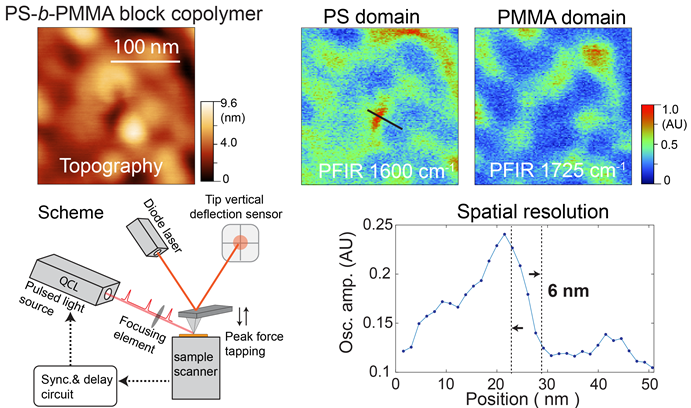Most of the research I’ve seen about polluting nanoplastics it concerns the ocean; this time it concerns the air. This research dates from November 2021 but I didn’t stumble across it until this February 2, 2022 article by Talib Visram for Fast Company (Note: Links have been removed),
By some estimates, people have discarded 4,900 million tonnes of plastic have into the environment. Once in nature, that plastic starts to degrade, fragmenting into microplastics about the size of a sesame seed, which are inadvertently ingested by humans and animals through eating them in seafood and drinking them in water. Some reports suggest that we all consume five grams a week–about the weight of a bottle cap.
But, we may be taking more plastics into our systems through our respiratory systems. There’s been less investigation of nanoplastics: particles smaller than microplastics, so small that they can move huge distances in the air and be more easily inhaled into the bloodstream. A new study looks at the travel of those lighter particles, finding them abundant in the atmosphere, and carried, via aerosol transmission, even to remote areas. As far as the scientists know, it’s “the most accurate record of air pollution by nanoplastics ever made.”
…
A February 1, 2022 news item on SciTechDaily.com highlights some of the concerns raised by the research,
In a new study, Empa [Swiss Federal Laboratories for Materials Science and Technology] researcher Dominik Brunner, together with colleagues from Utrecht University and the Austrian Central Institute for Meteorology and Geophysics, is investigating how much plastic is trickling down on us from the atmosphere.
According to the study, some nanoplastics travel over 2000 kilometers through the air. According to the figures from the measurements about 43 trillion miniature plastic particles land in Switzerland every year. Researchers still disagree on the exact number. But according to estimates from the study, it could be as much as 3,000 tonnes of nanoplastics that cover Switzerland every year, from the remote Alps to the urban lowlands. These estimates are very high compared to other studies, and more research is needed to verify these numbers.
….
A January 25, 2022 EMPA [Swiss Federal Laboratories for Materials Science and Technology] press release by Noé Waldmann, which originated the news item, provides some technical details,
In a large-scale fundraising campaign, popular YouTubers like Mister Beast and Mark Rober are currently trying to rid the oceans of almost 14,000 tonnes of plastic waste. That’s about 0.15 per cent of the amount that ends up in the oceans every year. But it’s not just our waters that are full of plastic. A new study shows that the spread of nanoplastic through the air is a more widespread problem than previously thought.
….
Extreme conditions
The scientists studied a small area at an altitude of 3106 meters at the top of the mountain “Hoher Sonnenblick” in the “Hohe Tauern” National Park in Austria. An observatory of the Central Institute for Meteorology and Geodynamics has been located here since 1886. The observatory is run by meteorologist and Arctic researcher Elke Ludewig. Since research began here in the late 19th century, the observatory has only been non-operational on four days. The research station also served as a base for the study on the spread of nanoplastics in remote areas.
Every day, and in all weather conditions, scientists removed a part of the top layer of snow around a marker at 8 AM and carefully stored it. Contamination of the samples by nanoplastics in the air or on the scientists’ clothes was a particular challenge. In the laboratory, the researchers sometimes had to remain motionless when a colleague handled an open sample.
The origin of the tiny particles was traced with the help of European wind and weather data. The researchers could show that the greatest emission of nanoplastics into the atmosphere occurs in densely populated, urban areas. About 30% of the nanoplastic particles measured on the mountain top originate from a radius of 200 kilometers, mainly from cities. However, plastics from the world’s oceans apparently also get into the air via the spray of the waves. Around 10% of the particles measured in the study were blown onto the mountain by wind and weather over 2000 kilometers – some of them from the Atlantic.
Nanoparticles in the bloodstream
It is estimated that more than 8300 million tonnes of plastic have been produced worldwide to date, about 60% of which is now waste. This waste erodes through weathering effects and mechanical abrasion from macro- to micro- and nanoparticles. But discarded plastic is far from the only source. Everyday use of plastic products such as packaging and clothing releases nanoplastics. Particles in this size range are so light that their movement in the air can best be compared to gases.
Besides plastics, there are all kinds of other tiny particles. From Sahara sand to brake pads, the world is buzzing through the air as abrasion. It is as yet unclear whether this kind of air pollution poses a potential health threat to humans. Nanoparticles, unlike microparticles, do not just end up in the stomach. They are sucked deep into the lungs through respiration, where their size may allow them to cross the cell-blood barrier and enter the human bloodstream. Whether this is harmful or even dangerous, however, remains to be researched.
Included here because of its compelling story is Utrecht University’s November 1, 2021 press release conveying the researchers’ excitement, (Note: Links have been removed)
Nanoplastics found in the Alps, transported by air from Frankfurt, Paris and London
A team of researchers have found nanoplastics at the pristine high-altitude Sonnblick Observatory in the Alps. This is the first time that nanoplastics were found in this area. The researchers were originally looking for certain organic particles, but found nanoplastics by chance, discovering a new analysis method for detecting nanoplastics in the process. …
The researchers were looking for organic particles by taking samples of snow or ice, evaporating them, and then burning the residue to detect and analyse the vapours. “Our detection method is a bit like a mechanical nose. And unexpectedly, it smelled burning plastics in our snow samples,” lead researcher Dušan Materić explains. The detector found the smell of several types of plastic, mostly polypropylene (PP) and polyethylene terephthalate (PET).
The detected plastic particles turned out to be less than 200 nm in size, about one hundredth the width of a human hair. That is significantly smaller than plastic particles detected in previous studies. “With this detection method, we are the first group to quantify nanoplastics in the environment,” says Materić. “Since the high Alps are a very remote and pristine area, we were quite shocked and surprised to find such a high concentration of nanoplastics there.” The results suggest that in addition to microplastics, there might be as much nanoplastics present in these remote places.
Transported by air
“We were quite gripped by these findings,” Materić continues. “It’s highly unlikely that these nanoplastics originated from local pristine Alpine areas. So where did they come from? We completely turned around our research project to study this further.”
The researchers found a striking correlation between high concentrations of nanoplastics and winds coming from the direction of major European cities, most notably Frankfurt and the industrial Ruhr area (Germany), but also the Netherlands, Paris, and even London.
“Advanced modelling supported the idea that nanoplastics are indeed transported by air from these urban places,” says Materić. “That’s potentially alarming, because that could mean that there are hotspots of nanoplastics in our cities, and indeed in the very air we’re breathing. We are currently studying this in more detail.” Since working on the current publication, Materić has already received an additional NWO [Dutch Research Council] grant of 50,000 Euros to study the size distribution of nanoplastics in indoor, urban and rural air.
Here’s a link to and a citation for the paper,
Nanoplastics transport to the remote, high-altitude Alps by Dušan Materić,
Elke Ludewig, Dominik Brunner, Thomas Röckmann, Rupert Holzinger. Environmental Pollution Volume 288, 1 November 2021, 117697 DOI: https://doi.org/10.1016/j.envpol.2021.117697
This paper is open access.

